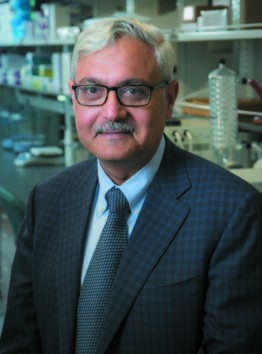Ashutosh Chilkoti, Chair, Duke Biomedical Engineering
When Duke BME was created in 1967, our research in medical ultrasound and cardiac electrophysiology distinguished us in the nascent field of biomedical engineering. As our department has grown, our faculty have continued to pioneer new areas of biomedical engineering, with work encompassing tissue engineering (page 65), biomaterials (page 296), drug delivery (page 82), biophotonics (page 145) and neuroengineering (page 260). Because of our proximity and close ties to the Duke University School of Medicine and Duke University Hospital – among the best medical schools and hospitals in the country – these collaborative research efforts often move from the laboratory bench to the bedside.
In Duke BME, we pursue biomedical research that serves society. As we strive towards this goal, we continue to attract outstanding faculty and students who create innovative solutions to today’s most challenging healthcare problems. The papers in this collection provide a snapshot of our work in the past decade, and we know that there is more exciting research on the horizon.

